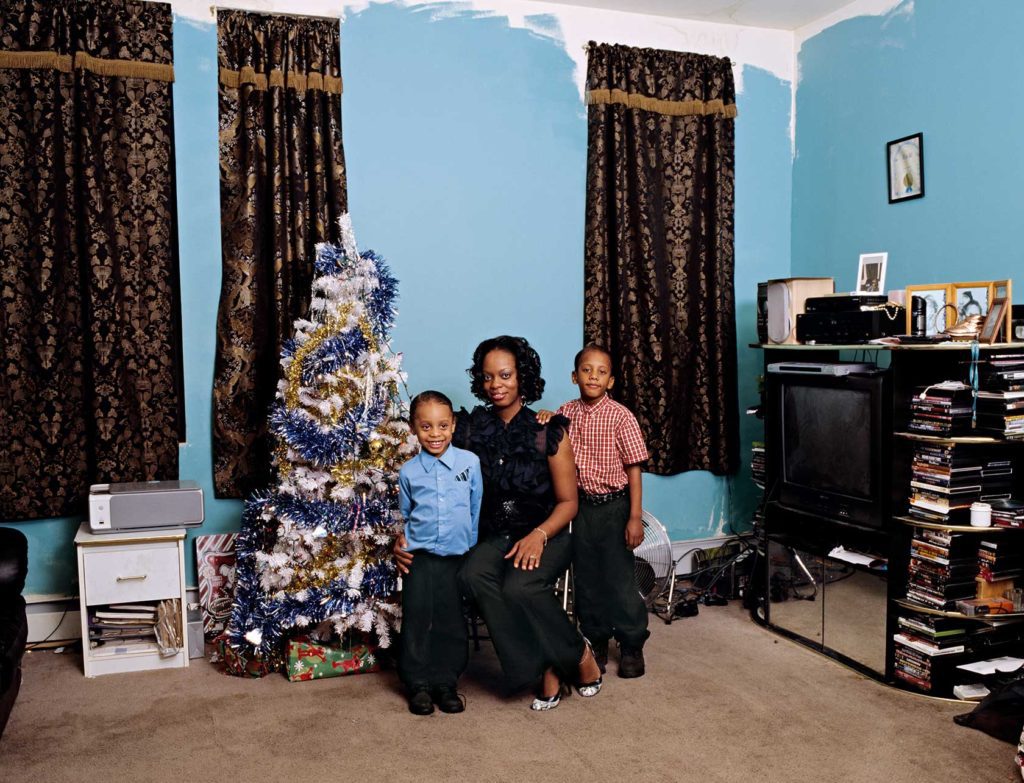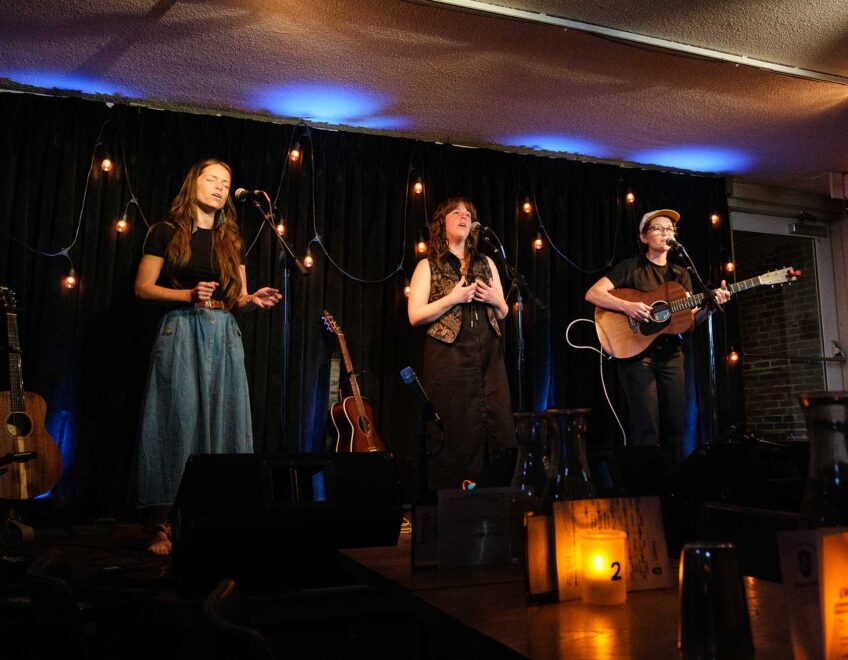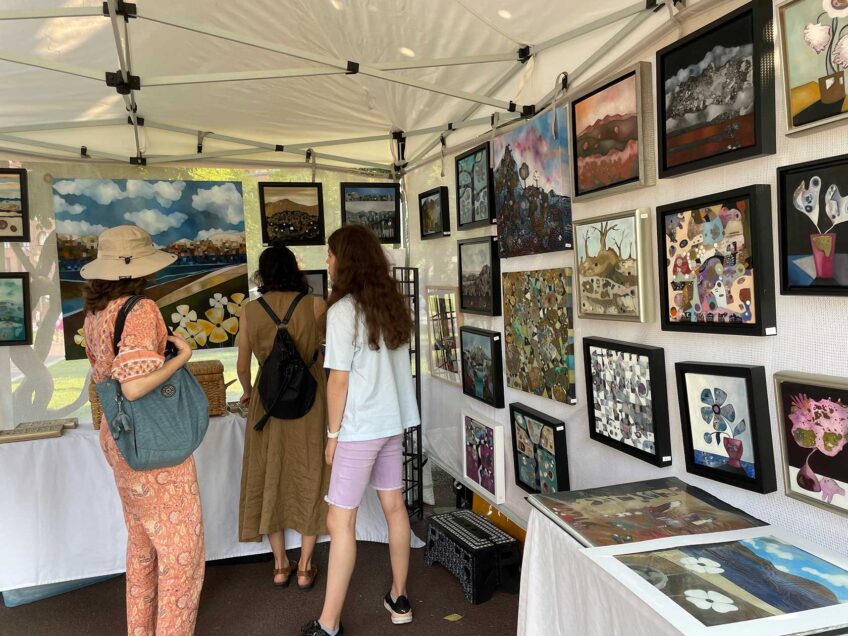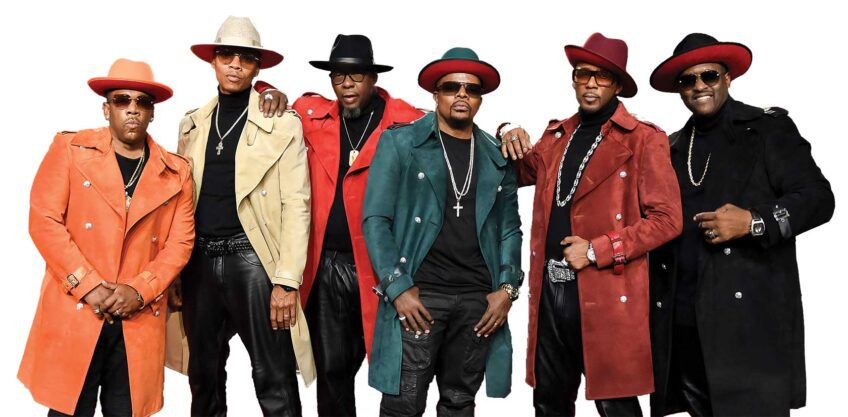The Black family album
ICA debuts first museum survey of photographer Deana Lawson

The Institute of Contemporary Art/Boston (ICA) debuted the first museum survey of photographer Deana Lawson last week. Organized with MoMA PS1 and running at the ICA through Feb. 27, the exhibition showcases Lawson’s striking representations of Black life. The carefully orchestrated images draw on a history of photographic traditions to challenge racial stereotypes.
“The idea of destiny and vision and kin is interwoven in everything you see in this exhibition,” says Eva Respini, the ICA’s Barbara Lee chief curator. “Deana Lawson, in our opinion, is one of the most important photographers working today.”
The ICA exhibition showcases two styles of images from Lawson’s work: assemblages, which are groupings of found photographs, and intimate large-format images of figures or spaces. Many of the figurative images are shot in interior spaces and the exhibition has the trappings to match: Wall-to-wall carpeting covers the floor, and the artworks are framed without mats, creating the feel of a family photo album.

Deana Lawson, Nation, 2018. Pigment print and collaged photograph. COURTESY OF THE ARTIST; SIKKEMA JENKINS & CO., NEW YORK AND DAVID KORDANSKY GALLERY, LOS ANGELES. © DEANA LAWSON
The photographic spaces viewers find themselves in have no additional context. Windows and doors are closed off; there is no sense of when or where we are or whom we are with. Intensifying that feeling is the lack of curatorial text. Only a few images have text next to them, and it is almost exclusively reflections from local artists and thinkers rather than explanations. Without these trappings of the typical museum experience, viewers must draw on their own associations and memories.
Lawson’s work may feel spontaneous, but her images are intensely curated and controlled by the artist. “We as viewers are used to assuming the factuality of what we are seeing,” says Peter Eleey, Curator-at-Large, UCCA Center for Contemporary Art, Beijing and Shanghai, who formerly was chief curator at MoMA PS1. “Even if it’s true, Deana has intervened in lots of ways.”
Organized chronologically, the show allows viewers to track changes in Lawson’s work. In more recent years, the photographs get larger, allowing viewers to dive further into the worlds the 42-year-old artist has created. She also begins to use photographic overlays and holographic images.
In “Nation,” two men sit on a couch looking at a camera. Another, whose head can’t be seen, stands in the corner. Overlaid over the image in the upper-right-hand corner is an archived image of George Washington’s dentures, which are believed to have been made with the teeth of enslaved persons.
A lot of commentary is at work here. Lawson points to the hypocrisy of the United States’ founding father, supposedly known for his cherry-tree honesty, utilizing enslaved people’s teeth for his own dentures. One of the figures on the couch is wearing an elaborate dental contraption painted gold, a reference both to the archival dentures image and to gold grills popular in the 1980s and 90s hip-hop scene.
“Deana Lawson” is an exhibition that requires multiple visits, many hours and a deep kind of seeing. Respini says, “For me, what is so resonant and so satisfying about Deana’s work is that it’s mysterious, it’s mystical, it’s satisfying — but it always has me looking.”







